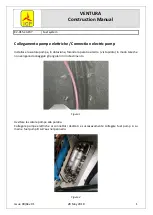
P/N 140-590035-0005TC12
Dec 23, 2010
Page 2 of 2
TEMPORARY CHANGE
P/N 140-590035-0005TC12
ICE PROTECTION
AIRFRAME ICE PROTECTION SYSTEM MALFUNCTIONS
The following information is directed toward TKS protected surfaces
Indications of malfunction may include:
• No pump running noise
• No fluid remaining
• Ice evident on wing TKS panel
If a malfunction is apparent or suspected during flight, proceed as follows:
• Leave icing conditions as soon as possible. Remain clear of actual or forecast icing.
• Before starting the landing approach, observe the wing leading edge to determine if ice
is present on the TKS panels or the wing surface directly behind the panels (protected surfaces).
(a) If ice is present on the protected surfaces, do not select flap.
i. If atmospheric conditions permit, attempt to shed residual ice accumulation prior to landing.
ii. If ice cannot be shed from the protected surfaces, use flaps 0° for landing.
Refer to the Airplane Flight Manual, Section 4, Sub-section 4.05 ABNORMAL
PROCEDURES - OPERATIONS FLAPS UP or 15° APPROACH and LANDING
procedure.
(b) If ice is not present, make a normal landing.
The following information is directed toward unprotected surfaces
During flight in icing conditions, ice accumulation may be expected on wing landing light covers,
vortilons and winglet leading edges (unprotected surfaces).
NOTE: If icing conditions exist, or if ice has formed on the unprotected parts of the airframe prior
to approach, add 10 KIAS to the normal approach and landing speeds. Landing distance is
increased by 15%.
For Training Purposes Only
















































